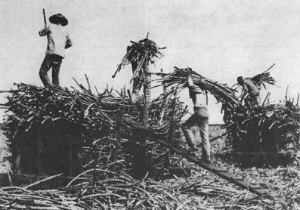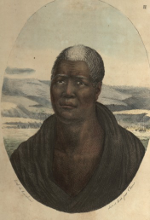The Making of the 50 States: Hawaii
Part 1: In the Beginning The first known settlers of what is now Hawaii were Polynesian voyagers, probably from the Marquesas Islands, about A.D. 300. A number of Tahitian settlers, led by the priest Pā'ao, arrived a few hundred years later. These people developed relatively independently from the rest of the world for a few hundred years. 
The English explorer James Cook arrived in 1778, putting in at Kauai in January. It was his third voyage of exploration for the British Crown. He named the islands the Sandwich Islands, after the fourth Earl of Sandwich, who was then the First Lord of the Admiralty. Cook got along well with the people living there the first time around; he was not so lucky the next time. The following year, Cook and his men were returning from sailing in and around the Bering Strait when they again landed in Hawaii, this time on the Island of Hawaii. A series of disagreements escalated into violence, and Cook was among those killed. A chief named Kamehameha united the islands in 1810 and appointed himself king. The monarchy of a united Hawaii would last for nearly a century. The first American missionaries arrived in 1820 and began translating the Bible into the language spoken by Hawaiians. The Christian religion soon spread throughout the islands. Among the things taught by missionaries to Hawaiians was how to read and write their own language; up until that point, their language had been strictly a spoken one. 
The Kingdom of Hawaii and the United States signed a treaty of friendship in 1826. Other Americans came to cultivate sugar, establishing the first plantation in Kaua in 1835. Plantation farming required large amounts of labor, and workers came from China, Japan, the Philippines, and elsewhere to work in the fields. Whalers also visited the islands. 
Western traditions expanded into governing the islands in 1848, with the advent of the Constitution of Hawaii, which provided for a parliament and a supreme court. King Kamehameha III had proclaimed a constitutional monarchy eight years before. Among the things that Westerners brought to Hawaii along with industry and technologically advanced weapons was disease, most notably smallpox. In later years, leprosy, too, was a swift killer of native Hawaiians. The island of Molokai was set aside in 1866 for victims of this disease. The chief who had united the islands, Kamehameha I (right), was the first of five so-named ruling monarchs. The last died in 1872 and was replaced by Lunalilo, who ruled just more than a year and, after dying in office, was replaced by Kalākaua, who served until 1891. Next page > The Rest of the Story > Page 1, 2
|
|
Social Studies for Kids
copyright 2002–2026
David White




